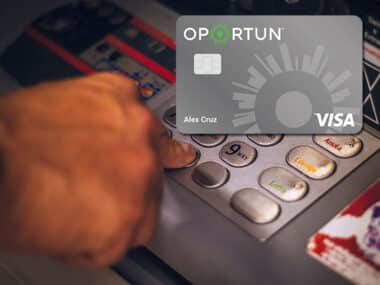
Since the early history of credit scores, our credit reporting systems have become much more complicated. When credit report mistakes happen, they’re often obscured behind the many sophisticated, automated mechanisms that keep track of a millions of people’s credit histories. Thanks to these complex systems, and the vast number of people serviced by credit reporting bureaus, it’s not always feasible for errors on credit reports to be investigated by a live human being.
Table of Contents
What Is e-OSCAR?
In order to ensure that mistakes on credit reports might be investigated in a timely manner, the e-OSCAR (Online Solution for Complete and Accurate Reporting) system was created in 1993. Owned by four credit reporting companies — Equifax, Experian, Innovis, and TransUnion — e-OSCAR gives these companies a means of investigating credit reporting disputes without ever dispatching a human employee. Sometimes the system works well and disputes are resolved quickly and definitively. However, consumer complaints are often complicated, as they involve real-world breakdowns of our credit reporting systems. Not all complaints fit well into a mechanical correction process.
Automated Credit Dispute Verifications (ACDV)
The e-OSCAR process begins with an Automated Consumer Dispute Verification (ACDV). The ACDV is an attempt by a credit bureau employee to characterize a consumer’s dispute in terms of codes that the e-OSCAR system will understand.

Automated Universal Dataforms
During a credit reporting dispute, the consumer’s initial complaint is converted into an Automated Universal Dataform (AUD). This is true of all consumer disputes, and not just the ones that fit neatly into the parameters of the AUD.
How Does e-OSCAR Work?
The e-OSCAR system works in a fairly straightforward way. However, during the disputing process with e-OSCAR, much of the data surrounding the consumer’s original complaint is lost. E-OSCAR works in three steps:
- The consumer sends a letter to dispute a credit reporting error and the credit reporting bureau receives this letter.
- An employee at the credit reporting bureau converts the contents of this letter into one of 29 dispute codes used by the e-OSCAR system, sometimes with a few sentences of supplemental information.
- The e-OSCAR system sends this code along to the data furnishers, the ones who give credit reporting agencies your information.
e-OSCAR Dispute Codes
E-OSCAR uses 29 different reporting codes, each corresponding with a different possible credit report error. Those codes are:
- 001 — Not his/hers.
- 002 — Belongs to another individual with same/similar name.
- 006 — Not aware of collection.
- 008 — Late due to change of address and never received statement.
- 010 — Settlement or partial payments accepted.
- 012 — Claims paid the original creditor before collection status or paid before charge-off.
- 014 — Claims paid before collection status.
- 019 — Included in the bankruptcy of another person.
- 023 — Claims account closed.
- 024 — Claims account closed by consumer.
- 031 — Contract cancelled or rescinded.
- 037 — Account included in bankruptcy.
- 038 — Claims active military duty.
- 039 — Insurance claim delayed.
- 040 — Account involved in litigation.
- 041 — Claims victim of natural or declared disaster.
- 100 — Claims account deferred.
- 101 — Not liable for account (i.e. account belongs to ex-spouse, business, etc)
- 102 — Account reaffirmed or not included in bankruptcy.
- 103 — Claims true identity fraud/account fraudulently opened.
- 104 — Claims account take-over, fraudulent charges made on account.
- 105 — Disputes Dates of Last Payment/Opened/ of First Delinquency/Billing/Closed.
- 106 — Disputes present/previous Account Status/Payment History Profile/Payment Rating.
- 107 — Disputes Special Comment/Compliance Condition Code/narrative remarks.
- 108 — Disputes Account Type or Terms Duration/Terms Frequency or Portfolio Type disputed.
- 109 — Dispute current balance.
- 110 — Claims company will change.
- 111 — Claims company will delete.
- 112 — Claims inaccurate information.
Problems With e-OSCAR
While e-OSCAR does allow for the efficient processing of some credit reporting disputes, it is not without its problems. Consumer rights advocates complain that ACDVs don’t always capture the details of a consumer’s dispute. A mischaracterized complaint can drag out the time it takes to fix the error on the consumer’s credit report. In addition, supporting documents are not transferred in in consumer’s AUD, meaning that information important to a dispute does not always follow that consumer’s dispute through the investigation process.
A congressional report in 2007 found that e-OSCAR reports used the same four dispute codes over 90% of the time, calling into question the value of the 29 codes. That same report found that, through the e-OSCAR system, credit reporting bureaus never actually investigate disputes, instead choosing to simply repeat a consumer’s complaints to data furnishers.
Image Source: https://depositphotos.com/






